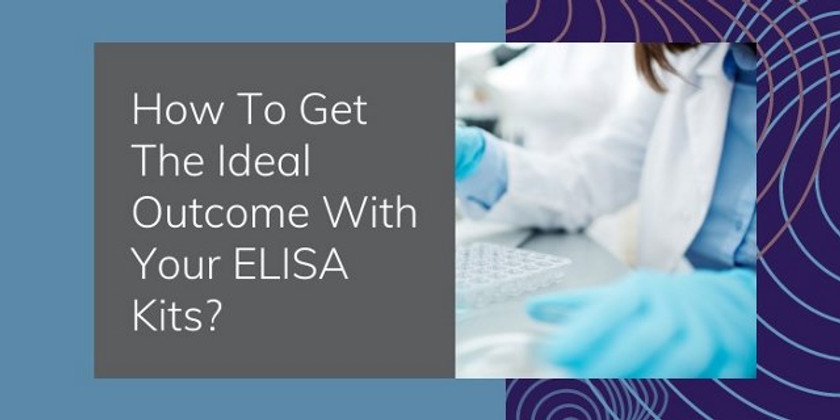How To Get The Ideal Outcome With Your ELISA Kits?
Aug 19th 2021
An ELISA or EIA, referred to as enzyme-linked immunosorbent assay is one of the most proficient tests to measure and detect blood antibodies. Laboratories utilize this test to determine if a being has specific antibodies related to severe infectious conditions. In addition, antibodies are proteins that a body generates in response to adverse substances knows as antigens. Moreover, several researchers and scientific departments have used ELISA to provide screening tools before in-depth tests get ordered.
How do researchers perform ELISA tests?
The ELISA tests are straightforward, where one has to sign a consent form before the healthcare professional writes remarks. These remarks contain reasoning on why an individual has to undergo ELISA tests. When it comes to detecting antibodies concerning viruses and infections, a doctor will take a blood sample to assess the number of present antibodies. While it was relatively challenging to operate ELISA, modern technologies have streamlined the techniques and processes to make them user-friendly.
Selecting the right ELISA type
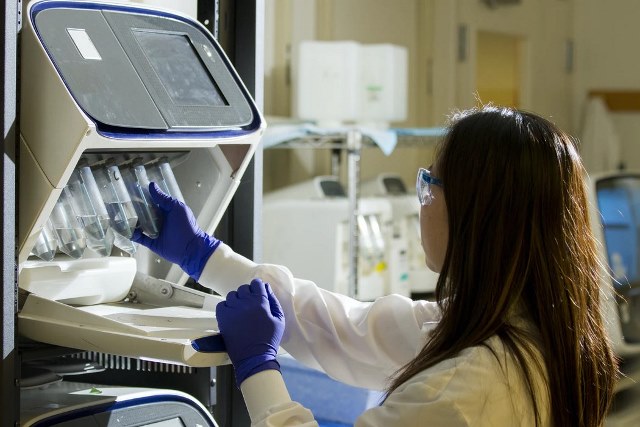
There are four primary forms of ELISA - indirect ELISA, direct ELISA, competitive ELISA, and sandwich ELISA. And each comprises distinctive suitability, advantages, and disadvantages.
- Direct ELISA
A direct ELISA detects and immobilizes antigens to the multi-well plate’s surface through specific antibodies. Post this; it conjugates the custom antibody to HRP or various other molecules used for detection purposes. - Indirect ELISA
Indirect ELISA is one of the methods that utilize two-step processes to detect. Meanwhile, primary antibodies concerning the antigens perform binding activities against the target and allow the secondary labeled antibodies to bind against host species of the primary antibody. As for direct ELISA assays, the antigen gets immobilized to the multi-well plate’s surface. Such a method can also detect a serum sample’s specific antibodies by substituting serum for the capitalizing antibody. - Sandwich ELISA
Several researchers worldwide utilize Sandwich immunoassay or sandwich ELISA. Such a format needs two specific antibodies for various antigen epitopes. Moving on, researchers working on sandwich ELISA refer to these two antibodies as matched pairs. One of its antibodies is then coated on the multi-well plate’s surface and utilized as capture antibodies to administer an antigen’s immobilization. - Competitive ELISA
Competitive ELISA or inhibition ELISA can measure an antigen’s concentration by detecting signal interference. Every ELISA format discussed above can be adapted into the workings of the competitive format. Here, the antigen’s sample competes with the reference antigen to bind to specific amounts of labeled antibodies. While a pre-coated reference antigen binds against the multi-well plate, its sample gets pre-incubated with labeled antibodies. Once the process is complete, researchers tend to add them to the wells. Based on the antigen’s amount available in the sample, free antibodies will be accessible to communicate with reference antigens.
This simply implies that the more antigens are present in the sample, there will be less detection of reference antigens. As a result, it will send a weaker signal.
Getting suitable results with ELISA
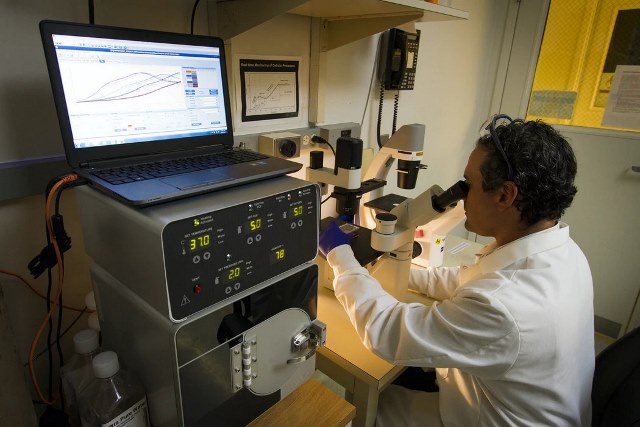
ELISA kits are favored for their specificity, simplicity, and cost-effectiveness and are valuable techniques in several laboratories worldwide. Many commercial and pharmaceutical outlets purchase ELISA kits for a vast range of analytes based on their popularity. Gene synthesis also plays a significant part in such scenarios. However, these outlets know the limitations of ELISA’s formats and understand its expensiveness in a research setting. Such clarity enables laboratories to produce and develop their assays, specifically when they’re running on stringent budgets and where several antibody samples need to be tested and analyzed.
Even though there are several techniques to use ELISA, various factors need to be considered to design reliable and robust assays. Here are some ways and tips to save time, money, and stress for achieving the best possible results.
1. Choose the surface wisely
Because of proteins’ diverse nature in ELISA, a broad range of microplates are available with various binding capacities and properties. Meanwhile, while producing an assay, an individual should assess several surfaces and other factors to determine the suitable antigen or antibody testing. Even though some testing plates or surfaces are developed with similar plastics like polyvinyl chloride or polyurethane, they come with multiple binding properties. It is essential for people working on such testing to know a suitable surface that comes with plastics with all binding capabilities. This not only provides you with an edge but also clears your ground if you’re testing several samples at once.
In conclusion, one must titrate the molecules utilized for the coating to ensure an ideal concentration for an assay.
2.Chequerboard
Although it is sensible to utilize higher antibody concentrations in the test, especially when detected molecules are not in higher quantities, this could be counterintuitive. When you adhere to proper titration with antibodies, ensure that the noise signal ratio is equal to optimal. The aim is to have the highest OD with the lowest possible background for a sensitive and well-equipped assay. In an experiment, if you use an abundance of antibodies, it may lead to a higher background noise because of undefined binding and communication. However, when concentrations are on the lower side, the assay will mislay its sensitivity.
A suitable method to test it is through conducting several serial molecule dilutions that one can use for coating, samples, and secondary antibodies. Moreover, you can use multiple plastic types simultaneously.
3. Proper sample dilution is vital.
A handful of researchers tend to overlook the proper sample dilutions while investigating assay variability. While a sample must go through dilution processes like the serum, an in-detail dilution is vital to minimize pipetting errors. For instance, if the chequerboard test has ensured the correct ratio before adding to the surface, it would be ideal for processing 1:100 dilution against the sample along with 1:10 dilution. Since this is evident, it may develop significant variations amongst experimental models, leaving a researcher frustrated. The improper dilutions can also produce misleading results while differentiating samples within similar experiments.
4. No equal antibodies
Even if one has more antibodies to a single protein, experts suggest that it is ideal for testing one first. In addition, there are various considerations to adhere to while selecting preferred antibodies. Polyclonal antibodies incorporate more comprehensive target ranges and are less costly. However, it may affect an assay’s specificity. On the other hand, monoclonal antibodies are relatively expensive but are more test-specific if the epitope is visible.
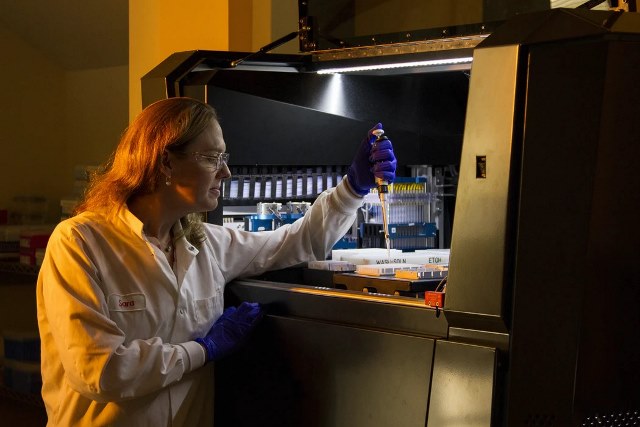
More often, the only process through which you can determine this is by testing various antibodies produced by different manufacturers. Fortunately, numerous manufacturers provide small sample sizes for such experiments or can offer them on orders. Consequently, while choosing preferred pairs for sandwich ELISAs, this option becomes more evident and essential as the antibodies recognize epitopes.
5. Understand blocking surprises
Innumerable investigators conduct various blocking agents in the assay’s development stages and decide to utilize that to provide them with an ideal signal-to-noise ratio. Meanwhile, researchers often overlook a specific factor concerning the batch-to-batch variation of certain blockers.
Here, blockers act as biological agents, like BSA or bovine serum albumin, a practical yet efficient blocker in a vast assay range. However, because of the reagent’s nature, it can differ amid batches as some of them comprise a majority of cross-reactive antibodies that may hinder the experiment. As a result, if blockers like fetal calf serum or BSA are often chosen, you must test various batches to determine the consistency in results.
This is one of the essential considerations that most individuals forget to implement or incorporate. In simple terms, where people observe batch-to-batch variations, manufacturers are likely to be happy to hold specific batches. Since they know and have consulted regarding the correct numbers, researchers have an initial idea of how much will be put to practice.
6. Secondary antibodies - Batch testing
Homogenous to particular blocking agents, secondary antibodies’ batches can also fluctuate. Even though their entire activity can’t change, the amount required can vary significantly. So, while buying other batches of secondary antibodies, one must run a straightforward experiment with the previous batch to determine whether the concentration utilized is applicable. Experienced professionals can quickly acknowledge the background noise and point it towards the batch change. This is one of the surprising yet unwelcoming changes.
7. Consider normalizing
Often overseen, the normalization method occurs between experiments and plates and reduces its impact on the entire result. A straightforward approach to normalizing such testing where researchers have utilized serum is to distinguish the sequel for every serum sample against negative serum control. By performing this specific step, alien variations from external factors like development time and room temperature are minimized. However, by dissecting the test sample’s OD by the control’s OD, one can express the impact as fold changes.
Since this is not quantification, an absolute figure is not essential. Nevertheless, an individual can still obtain a solid chain of results and compare various samples.
8. Know your dynamic range
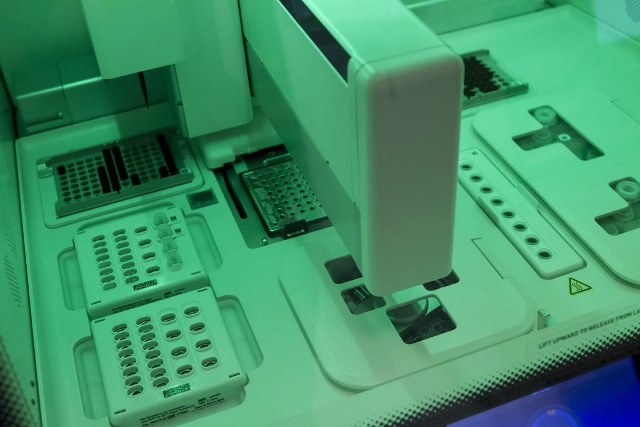
When developing a test where you utilize standard curves to determine the sample’s concentration, one must remain under the instrument’s dynamic range. Simply put, you should not exceed the dynamic limit of a tool used to read and administer plates and surfaces. If you are not sure of this, you can find it in the manufacturer manual. In addition, many machines’ upper limit varies around 1.5 OD. While preparing the standard curve of the experiment, the most concentrated standard must comprise an OD below the dynamic range’s highest limit.
If you choose to place the standards above the specified range, extrapolating these results becomes risky, which eventually leaves an adverse influence on the standard curve. Here, if the OD falls above an approved figure, the result might come out as inaccurate. Moving on, several latest models of surface and plate readers can adjust and maneuver the dynamic range. However, if a researcher uses a particular model where this isn’t possible or accessible, they must consider the maximal OD in the standard curve design.
Moreover, every sample should gravitate to this range. This is because dilution plays a significant role in such a process. Considering the range and dilution within retrospective actions can be highly frustrating. Yet, once the operator aligns with the range of the concentration in batch samples, you can seamlessly utilize standard dilution to fit amid the approved range and provide ideal results for further testing.
9.Follow the recommended temperatures, incubation times, and conditions.
Adhering to the incubation recommendations and suggestions demonstrated in the assay manual is essential for achieving focused color development. Time, temperature, and shaking can considerably affect an assay’s status if you do not follow them. Reducing the minutes an incubation process usually takes can prevent every element from reaching out for equilibrium. This occurs before moving on in the assay. Furthermore, higher temperatures may also leave an impact on binding kinetics. However, if a researcher suggests shaking, it would be ideal for sticking to that guideline.
Besides, in some specific assays, this may lead to a resulting change in the OD. Consistency and accuracy of operating in the course of plate incubation may enhance the performance of your selected assay.
10. Obtain data analysis and optimal detection
To achieve optimal detection, go through the surface and plate at the assay’s indicated wavelength. You will find such information in the assay manual to quickly analyze the data software put into use. Several researchers suggest the use of curve fit to determine data analysis to acquire accurate figures and results. However, if you’re not familiar with the plate reader’s software, consider reaching out to the manufacturer to confirm and raise your concerns. If you already have the specific software to move further, the ELISA kit manufacturers will guide you through the setup of your plate template.
It is essential to know that such a process regulates data analysis that may occur soon after the plate is read.
The Bottom Line
Proceeding with ELISA tests and experiments can be tedious and excruciating if one does not thoroughly understand the concepts behind achieving ideal results. Since there are several ways to operate ELISA kits, one should not ignore external factors like optimal detection, incubation period, dynamic range, normalization, and adequate sample dilution.

